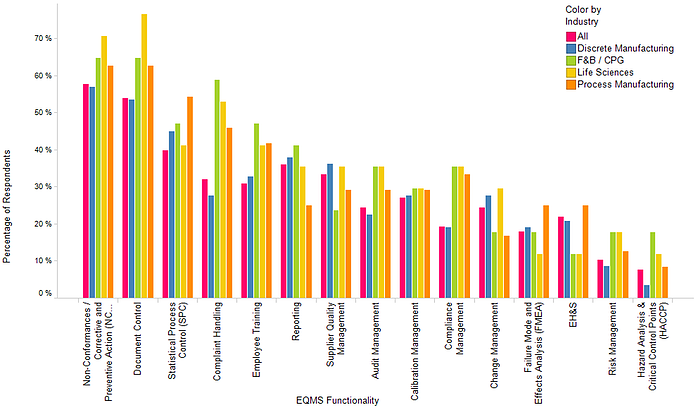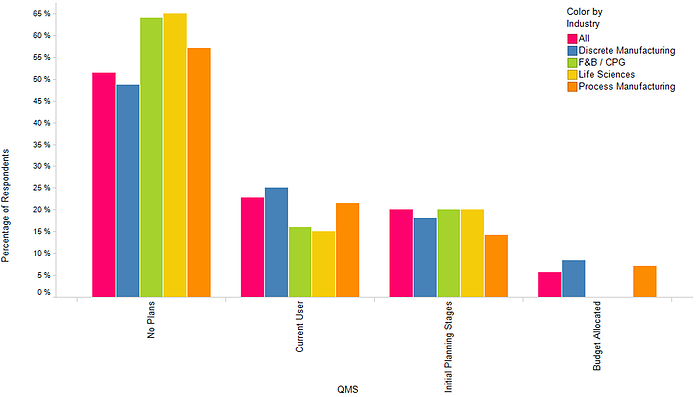One could slice and dice an industrial or manufacturing firm in many ways: business units, departments, product lines, facilities, and so on. Because the mangers of these activities each deal with their own sets of challenges, in addition to those of the organization as a whole, it’s no wonder there’s often a lack in communication and collaboration in operations.
A production manager, for instance, may implement a Corrective and Preventive Action (CAPA) process for investigating, resolving, and preventing issues, and more than likely, that plant will experience improvements. However, because he or she may not have done this in the context of the entire enterprise, it’s probable that those improvements will be limited.
At LNS Research, we’re working hard to decipher trends in our benchmark research. Analyzing the life sciences industry relative to others, we’re noticing a trend of companies employing point solutions for point quality management issues, overlooking the benefits of an integrated Enterprise Quality Management Software (EQMS) solution.
Adoption of EQMS Functionality
The bar chart below highlights the adoption of EQMS functionality in the life sciences industry. These functionalities are seen as part of the holistic EQMS solution, but can also be implemented on a stand-alone basis. Compared to Food and Beverages (F&B) and Consumer Processed Goods (GPG) industries and both discrete and process manufacturing spaces, this study shows the life sciences industry is leading in the adoption of many of these EQMS functionalities.
Of the respondents from the life sciences industry, over 70% stated having an application for managing CAPA and nearly 75% have implemented a document control system. Additionally, more than 60% are using complaint management functionalities, and roughly 40% noted the use of both Statistical Process Control (SPC) and employee training. Interestingly, less than 40% and 20% have reported using compliance management and risk management solutions, respectively.

Adoption of EQMS System
As seen in the chart below, despite having some of the highest adoption rates of EQMS functionalities, the life sciences industry had some of the lowest adoption rates for EQMS as a whole. Nearly 65% of executives and managers stated that their companies had no current plans to implement an EQMS. Moreover, only 15% said their organizations were current users and less than 20% were in the initial planning stages.

Interpreting the Data
By infusing quality management processes with the entire value chain, EQMS acts as a platform for cross-functional communication and collaboration. To truly accomplish closed-loop quality management, it’s nearly impossible without such a system in place. With the implementions of point solutions, the above data indicates that life sciences companies have a need for quality management functionalities, but it seems that the presence of a holistic, enterprise-level solution is generally missing.
When compared to EQMS, the effectiveness of disparate processes or applications for CAPA, compliance management, SPC, document control, and others is typically far lower. Consequently, many life sciences companies are at a distinct disadvantage when it comes to collaboration and operational risk management. With disparate systems, processes are not only harder to manage, they are more difficult to integrate with one another.
An executive or manager looking to make improvements on metrics such as the cost of quality or OEE will be met with adversity without a centralized and standardized flow of streamlined data. On September 20, 2012, our President and Principal Analyst, Matthew Littlefield, is speaking on this topic at a seminar held by QUMAS in Princeton, NJ. He will discuss how quality management software can benefit organizations, specifically in the areas of compliance and collaboration.
You may also be interested in:
Quality Management System: 5 Must Have Features for EQMS
Overall Equipment Effectiveness: Benchmark Data by Industry
Top 3 Strategies for Selecting an EQMS Solution

